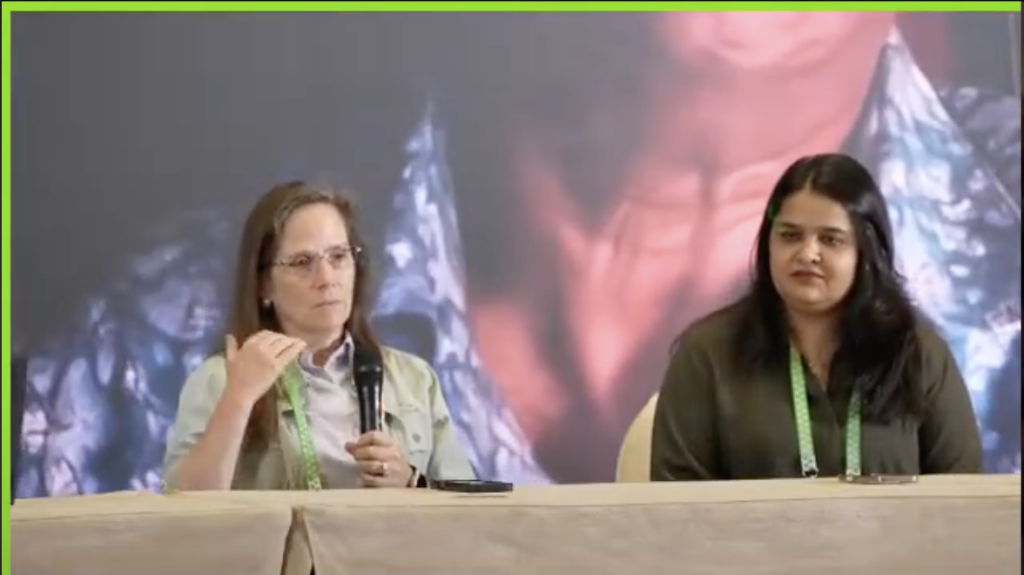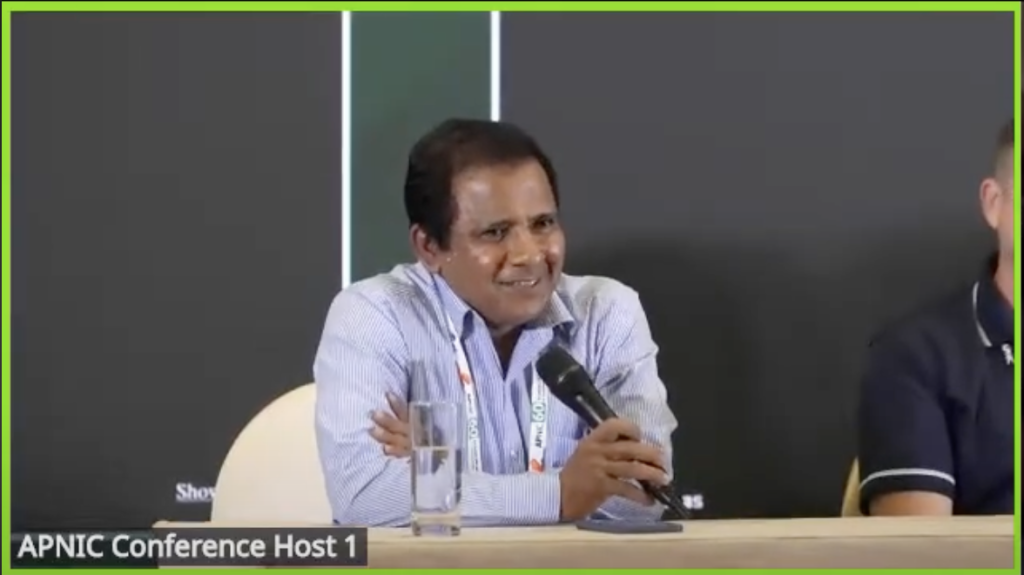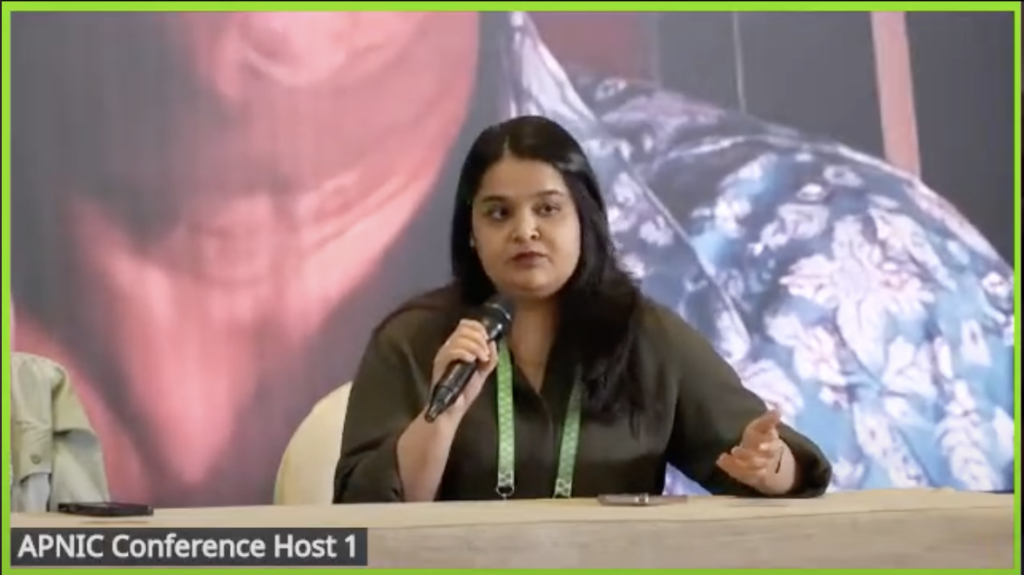
At APNIC 60 in Da Nang, a panel of community members explored an interesting question: Is diversity a form of critical infrastructure for the Internet networking community? While billions are invested in digital inclusion, most efforts focus on access at the application and physical layers. This session shifted the lens to the network and transport layers, asking: Whose voices are shaping the Internet’s core?
Setting the scene: Individual perspectives
Each panellist was invited to reflect on their personal and professional experiences with diversity in Internet communities.
Leslie Daigle started by noting that monocultures may be easier to manage, at the cost of creativity and robustness. She suggested the same is true of personnel and communities.
Champika Wijayatunga reflected on decades of engagement across the Asia Pacific, highlighting both progress and persistent gaps in inclusion. He noted that when APNIC first began, very few people in the service region knew about IP addresses, let alone why they would want to request one. This limitation was compounded by the scarcity of outreach options outside of physical presence. These factors constrained the inclusivity of early Internet community growth. Champika noted that, while access to the Internet and virtual engagement have improved the situation, a digital divide remains.
Dr Saima Nisar, drawing on her experience as an APNIC 60 Fellow, spoke about the barriers that prevent people from joining communities like APNIC. Before becoming an APNIC Fellow, she had “no idea about Internet organizations like ICANN or APNIC”, despite having Ph.D. in Information Technology. Saima noted that not everyone has a mentor to help them make the connection between engaging with Internet organizations and opportunity. She also pointed out a surprising barrier to participation — that sometimes free resources can be perceived as low value, or worse, as a scam. Those perceptions can prevent engagement with the APNIC community.
Pradip Thomas gave a broader perspective, comparing the challenges APNIC faces with those in other sectors, particularly education. He pointed out that while many organizations say diversity and inclusion are important, actually putting them into practice is much harder. He explained how senior leaders’ own experiences can create unconscious bias by measuring others against their own skills. For example, if success in an organization depends on being persuasive in English, non-native English speakers might be unfairly overlooked.
Understanding the problem: What’s missing?
The panel then turned to a group discussion to identify what’s lacking in the current Internet community landscape.
When considering the question of what voices we are currently missing, Leslie acknowledged the idea of ‘unknown unknowns’, but noted that there are likely people in our region who think about how to use the Internet very differently than we currently do. She also sketched out the difference between being open to newcomers and making participation compelling, with the ability to make a difference being a key potential attraction.
Technically-minded people in urban centres have been more likely to have fast, reliable Internet, and to participate in Internetworking community activities, according to Champika. He suggests proactively involving people from rural and Indigenous communities. Champika also related an experience leading a session with a visually impaired participant, and the accommodations that allowed that person to participate more fully in the session. Champika strongly encourages making adjustments that include people with diverse abilities in our communities.
Panellists had some suggestions about how to enable participation from newcomers while honouring long-time contributors, noting in particular the contributions the latter have made to building out platforms for community engagement and interaction, like conferences and Special Interest Groups.
Saima, Leslie, and Pradip all noted format improvements that could be made to create space for new voices. Small changes like better use of breakout groups, more intentional moderation, and ground rules that explicitly encourage uncertain participation could have a big impact.
Taking action: What can we do?
The final segment focused on solutions — what APNIC and the broader community can do to foster meaningful diversity. It was clear from panellist responses and audience questions that improving diversity and inclusion is seen as requiring continuous, ongoing attention from individuals and organizations.
Saima used her own recent experiences to illustrate the types of actions that were important in making her feel included. She received proactive support and mentorship from existing community members like APNIC’s Sunny Chendi. She also described her own realization that she could forge a path for herself by finding ways to get involved with existing initiatives and making connections with people who interested her. Finally, Saima described her sense of responsibility as an APNIC Fellow to ‘pay it forward’ by encouraging her own students to get involved with Internet governance, and by recognizing and uplifting the interests of other newcomers.
Pradip noted that, without community commitment to inclusive growth, success will be difficult. He asked rhetorically whether we see it as in our interest to add new, diverse perspectives to our ongoing and future discussions.
Champika added that this work is never finished, but should be thought of as a continuous process. He argued that a holistic and forward-looking approach to the challenges facing the Internet community needs to take diversity and inclusion into account.
Diversity is a necessity
The session closed with questions and comments from the audience, adding further depth and regional nuance to the discussion.
Bikram Shrestha noted that some Internet organizations in our region seem to avoid collectively talking about their impact. They noted, as Leslie had earlier, that the chance to have an impact draws new perspectives to our communities.
Another audience member noted that attracting new participants is only part of the story and that retaining them over the long term is also important. They added that helping to build career paths through the Internet industry would be a helpful investment.
Our region speaks in many languages added another audience member from Nepal. They pointed out that in remote areas of their home economy, over 120 languages are spoken, and Internet access is beyond the means of many who live there. These most basic challenges remain of critical importance in any discussion of diversity and inclusion.
The panel made it clear: Diversity isn’t just a value — it’s a necessity. As the Internet continues to evolve, so must the communities that build and govern it. Ensuring a wide range of voices at every layer of the Internet stack is essential to its resilience, security, and relevance.
The views expressed by the authors of this blog are their own and do not necessarily reflect the views of APNIC. Please note a Code of Conduct applies to this blog.




